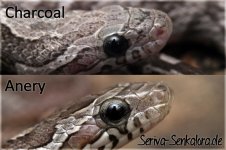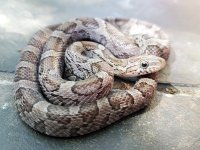Hi everyone,
So I bought a snake from someone a couple of months ago and recently asked about it's genetics from the person i bought the snake from - they directed me to their Instagram with the below picture (screenshot from there) of the snakes it was bred from.
My question, is the anery an anery, or a charcoal? It's rather hard to tell and they don't seem to know a whole bunch regarding morphs.
I've not long got into owning corn snakes so trying make sure I understand everything surrounding genetics and husbandry (seem to have nailed the latter - snake in question is eating very well, has had 2 full sheds, growing really well and has good levels of activity). Eventually, years down the line if/when I get into breeding I would want to understand the genetic history any snakes I may own or should I sell the snake, I wouldn't want to mislead anyone over its genetics.
Thanks in advance,
Jonathan.

Sent from my SM-G981B using Tapatalk
So I bought a snake from someone a couple of months ago and recently asked about it's genetics from the person i bought the snake from - they directed me to their Instagram with the below picture (screenshot from there) of the snakes it was bred from.
My question, is the anery an anery, or a charcoal? It's rather hard to tell and they don't seem to know a whole bunch regarding morphs.
I've not long got into owning corn snakes so trying make sure I understand everything surrounding genetics and husbandry (seem to have nailed the latter - snake in question is eating very well, has had 2 full sheds, growing really well and has good levels of activity). Eventually, years down the line if/when I get into breeding I would want to understand the genetic history any snakes I may own or should I sell the snake, I wouldn't want to mislead anyone over its genetics.
Thanks in advance,
Jonathan.

Sent from my SM-G981B using Tapatalk



